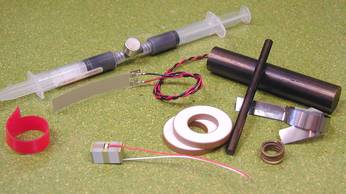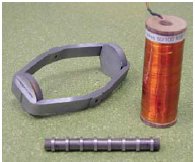Magnetostrictive actuators
Categories
- (34)
- (9)
- (3)
- (138)
- (18)
- (7)
- (2)
- (5)
- (8)
- (17)
- (1)
- (100)
- (7)
- (12)
- (7)
- (1)
- (1)
- (4)
- (152)
- (19)
- (2)
- (5)
- (111)
- (34)
- (10)
- (4)
- (55)
- (14)
- (3)
- (7)
- (61)
- (17)
- (5)
- (24)
- (7)
- (11)
- (1)
- (2)
- (1)
- (1)
- (1)
- (13)
- (12)
- (4)
- (6)

Giant dynamic strains in magnetostrictive actuators and transducers
19 June 2023
Magnetostriction occurs in the most ferromagnetic materials and leads to many effects [1,2]. The most useful one to refer to is the Joule effect. It is responsible for the expansion (positive magnetostriction) or the contraction (negative) of a rod subjected to a longitudinal static magnetic field. In a given material, this magnetostrain is quadratic and occurs always in the same direction whatever is the field direction. Giant Magnetostrictive Materials (GMM), especially Rare earth-iron discovered by A.E.Clark [3], feature magnetostrains which are two orders of magnitude larger than Nickel. Among them, bulk Tb0.3Dy0.7Fe1.9, called Terfenol-D, presents the best compromise between a large magnetostrain and a low magnetic field, at room temperature.

Tunable proof mass based on a pendulum structure
6 January 2008
Proof mass dampers are currently used in aircraft structures, but are not active, which introduce performance limitations. Proof Mass Actuators based on spring-mass structures are an interesting technique for active vibration control, but it is difficult to design them for operation below 100 Hz, especially if high dynamic forces are required. The proof of concept of a Tunable Proof Mass Actuator (TPMA) based on a pendulum structure has been assessed into the Mesema FP6 EC project targeting an Helicopter application.

